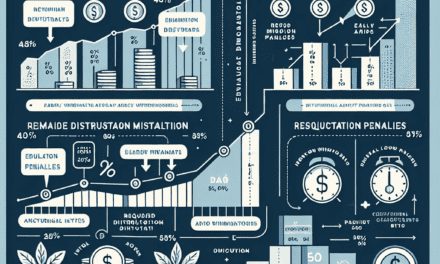“Google Options Trading: Unlock Your Path to 31.6% Profit Potential!”
Introduction
Google Options Trading offers investors a strategic avenue to capitalize on the volatility and growth potential of Alphabet Inc. (GOOGL) stock. By utilizing options, traders can leverage their positions, allowing for significant profit opportunities with a calculated risk. With a profit potential of 31.6%, options trading on Google not only provides a way to hedge against market fluctuations but also enables investors to benefit from price movements in a more flexible manner. This approach requires a solid understanding of market trends, technical analysis, and the intricacies of options contracts, making it an appealing choice for those looking to enhance their investment strategies.
Google Options Trading Strategies for Beginners
Google options trading presents an intriguing opportunity for investors seeking to capitalize on the volatility and growth potential of one of the world’s leading technology companies. For beginners, understanding the various strategies available can be crucial in navigating this complex financial landscape. By employing effective options trading strategies, novice traders can unlock the potential for significant profits, with some strategies even suggesting a profit potential of 31.6%.
To begin with, it is essential to grasp the fundamental concepts of options trading. Options are financial derivatives that provide the buyer the right, but not the obligation, to buy or sell an underlying asset at a predetermined price within a specified timeframe. In the context of Google, this underlying asset is typically the company’s stock. The two primary types of options are calls and puts. Call options allow traders to purchase shares at a set price, while put options enable them to sell shares at a predetermined price. Understanding these basic principles lays the groundwork for more advanced strategies.
One of the most straightforward strategies for beginners is the covered call. This approach involves owning shares of Google stock while simultaneously selling call options against those shares. By doing so, traders can generate income from the premiums received for the options sold. This strategy is particularly effective in a stable or slightly bullish market, as it allows investors to benefit from both stock appreciation and option premiums. However, it is important to note that if the stock price rises significantly, the trader may miss out on potential gains, as the shares will be called away.
Another strategy that beginners may find beneficial is the protective put. This strategy involves purchasing put options to hedge against potential declines in the value of Google stock. By buying a put option, investors can secure the right to sell their shares at a predetermined price, thereby limiting their losses in the event of a market downturn. This approach is particularly useful for those who wish to maintain their long positions in Google while protecting themselves from adverse price movements.
For those willing to take on a bit more risk, the long call strategy can be an attractive option. This strategy entails buying call options with the expectation that the stock price will rise significantly. If the price does increase, the trader can either sell the options for a profit or exercise them to purchase shares at a lower price. This strategy allows for substantial profit potential with a relatively small initial investment, making it appealing for beginners looking to maximize their returns.
Moreover, beginners should also consider the importance of timing and market conditions when engaging in options trading. Understanding the broader market trends and Google’s performance can significantly influence the success of any chosen strategy. For instance, during earnings announcements or product launches, volatility tends to increase, which can create opportunities for profit through options trading.
In conclusion, Google options trading offers a variety of strategies that can be effectively utilized by beginners. By understanding the fundamentals of options, employing strategies such as covered calls, protective puts, and long calls, and being mindful of market conditions, novice traders can position themselves to unlock significant profit potential. As with any investment, it is crucial to conduct thorough research and consider risk management practices to navigate the complexities of options trading successfully. With diligence and informed decision-making, beginners can embark on a rewarding journey in the world of Google options trading.
Analyzing Google Stock Performance for Options Trading
Analyzing Google stock performance for options trading requires a comprehensive understanding of the underlying factors that influence its price movements. As one of the leading technology companies globally, Alphabet Inc., the parent company of Google, has consistently demonstrated robust financial health and growth potential. Investors and traders alike are drawn to Google stock due to its historical performance, innovative product offerings, and strategic market positioning. By examining these elements, traders can identify opportunities for options trading that may yield significant profit potential.
To begin with, it is essential to consider Google’s historical stock performance. Over the past decade, the stock has shown a remarkable upward trajectory, reflecting the company’s ability to adapt to changing market conditions and consumer preferences. This growth is largely attributed to its dominance in the digital advertising space, where it commands a substantial market share. Furthermore, Google’s diversification into cloud computing, artificial intelligence, and hardware products has bolstered its revenue streams, making it a resilient player in the technology sector. Such a strong performance history provides a solid foundation for options trading, as traders can leverage this data to make informed decisions.
In addition to historical performance, analyzing Google’s financial metrics is crucial for options trading. Key indicators such as earnings per share (EPS), price-to-earnings (P/E) ratio, and revenue growth rates offer insights into the company’s profitability and market valuation. For instance, a consistently increasing EPS suggests that the company is effectively managing its costs while driving revenue growth. Similarly, a favorable P/E ratio compared to industry peers can indicate that the stock is undervalued, presenting a potential buying opportunity for options traders. By closely monitoring these financial metrics, traders can better assess the timing and strategy for their options trades.
Moreover, understanding market sentiment surrounding Google stock is vital for successful options trading. Market sentiment can be influenced by various factors, including economic indicators, industry trends, and news events. For example, announcements related to new product launches or regulatory changes can significantly impact investor perception and stock price. By staying informed about these developments, traders can anticipate potential price movements and adjust their options strategies accordingly. Utilizing tools such as technical analysis can further enhance this process, allowing traders to identify patterns and trends that may signal future price behavior.
Another important aspect to consider is the volatility of Google stock. Options trading inherently involves a degree of risk, and understanding the stock’s volatility can help traders gauge potential profit opportunities. High volatility often leads to increased options premiums, which can be advantageous for traders looking to capitalize on price swings. Conversely, low volatility may suggest a more stable price environment, which could influence the choice of options strategies, such as writing covered calls or employing protective puts. By analyzing historical volatility and implied volatility, traders can make more strategic decisions regarding their options positions.
In conclusion, analyzing Google stock performance for options trading involves a multifaceted approach that encompasses historical performance, financial metrics, market sentiment, and volatility. By synthesizing these elements, traders can unlock a profit potential of 31.6% or more, capitalizing on the dynamic nature of Google’s stock. As the technology landscape continues to evolve, staying informed and adaptable will be key to navigating the complexities of options trading in relation to Google stock. Ultimately, a thorough analysis not only enhances the likelihood of successful trades but also empowers traders to make informed decisions in a competitive market.
Risk Management Techniques in Google Options Trading
In the realm of options trading, particularly when it comes to high-profile stocks like Google, effective risk management techniques are paramount for safeguarding investments and maximizing profit potential. As traders navigate the complexities of the options market, understanding and implementing robust risk management strategies can significantly influence their overall success. One of the primary techniques involves setting clear risk-reward ratios before entering any trade. By determining the potential profit against the possible loss, traders can make informed decisions that align with their financial goals and risk tolerance.
Moreover, diversification plays a crucial role in mitigating risk. By spreading investments across various options contracts and underlying assets, traders can reduce the impact of adverse movements in any single position. This approach not only helps in balancing the portfolio but also allows traders to capitalize on different market conditions. For instance, while one option may be underperforming, another could be thriving, thus cushioning the overall portfolio against significant losses.
In addition to diversification, employing stop-loss orders is another effective risk management technique. A stop-loss order automatically sells an option when it reaches a predetermined price, thereby limiting potential losses. This strategy is particularly beneficial in the volatile environment of options trading, where prices can fluctuate dramatically in a short period. By setting stop-loss levels based on technical analysis or a percentage of the investment, traders can maintain discipline and avoid emotional decision-making during market swings.
Furthermore, position sizing is a critical aspect of risk management that traders must consider. By determining the appropriate amount of capital to allocate to each trade, traders can ensure that no single position jeopardizes their overall portfolio. A common guideline is to risk only a small percentage of the total trading capital on any given trade, often recommended to be around 1-2%. This conservative approach allows traders to withstand a series of losses without significantly impacting their overall financial standing.
Another essential technique is the use of options strategies that inherently limit risk, such as spreads and straddles. These strategies involve simultaneously buying and selling options to create a position that can profit from various market movements while capping potential losses. For example, a bull call spread involves purchasing a call option at a lower strike price while simultaneously selling another call option at a higher strike price. This not only reduces the initial investment but also limits the maximum loss, making it an attractive choice for risk-averse traders.
Additionally, staying informed about market trends and economic indicators is vital for effective risk management. By keeping abreast of news that could impact Google’s stock price, such as earnings reports or regulatory changes, traders can make timely adjustments to their positions. This proactive approach enables them to react swiftly to market shifts, thereby protecting their investments and enhancing their profit potential.
In conclusion, successful options trading in Google requires a comprehensive understanding of risk management techniques. By setting clear risk-reward ratios, diversifying investments, employing stop-loss orders, practicing prudent position sizing, utilizing risk-limiting strategies, and staying informed about market conditions, traders can navigate the complexities of the options market with greater confidence. Ultimately, these strategies not only help in safeguarding capital but also unlock the potential for significant profits, such as the impressive 31.6% profit potential that Google options trading can offer.
Understanding Implied Volatility in Google Options
Implied volatility is a crucial concept in the realm of options trading, particularly when it comes to understanding the dynamics of Google options. It serves as a measure of the market’s expectations regarding the future volatility of the underlying asset, in this case, Google’s stock. When traders assess options, they often look at implied volatility to gauge the potential price fluctuations of the stock over a specified period. A higher implied volatility indicates that the market anticipates significant price movements, while lower implied volatility suggests a more stable outlook.
To comprehend the implications of implied volatility, it is essential to recognize how it influences option pricing. The Black-Scholes model, a widely used framework for pricing options, incorporates implied volatility as a key variable. As implied volatility increases, the premiums for options tend to rise, reflecting the heightened uncertainty surrounding the stock’s future price. Conversely, when implied volatility decreases, option premiums generally decline. This relationship underscores the importance of monitoring implied volatility trends, as they can significantly impact the profitability of options trades.
In the context of Google options, understanding implied volatility can provide traders with valuable insights into market sentiment. For instance, if implied volatility is elevated, it may indicate that investors are bracing for potential news or events that could affect Google’s stock price. Such events could range from earnings reports to regulatory announcements or broader market shifts. Therefore, traders often analyze historical volatility patterns alongside current implied volatility to make informed decisions about their options strategies.
Moreover, the concept of implied volatility skew is particularly relevant when trading Google options. Implied volatility skew refers to the phenomenon where options with different strike prices or expiration dates exhibit varying levels of implied volatility. Typically, out-of-the-money options may have higher implied volatility compared to at-the-money options. This skew can provide insights into market sentiment and the perceived risk associated with different strike prices. For traders looking to capitalize on potential price movements, understanding this skew can be instrumental in selecting the right options to trade.
Additionally, it is important to consider the role of market events in shaping implied volatility. For example, during earnings season, implied volatility for Google options often spikes as traders anticipate significant price movements following the earnings announcement. This spike can create opportunities for traders who are adept at predicting the direction of the stock price. However, it also poses risks, as the actual price movement may not align with market expectations, leading to potential losses.
In conclusion, grasping the nuances of implied volatility is essential for anyone looking to engage in Google options trading. By understanding how implied volatility affects option pricing, traders can better navigate the complexities of the options market. Furthermore, recognizing the implications of implied volatility skew and the influence of market events can enhance a trader’s ability to make informed decisions. Ultimately, a thorough understanding of implied volatility not only aids in identifying potential profit opportunities but also equips traders with the knowledge necessary to manage risks effectively. As traders delve deeper into the world of Google options, they will find that mastering implied volatility is a key component in unlocking the potential for substantial profits.
Case Studies: Successful Google Options Trades
In the realm of options trading, Google, now operating under the parent company Alphabet Inc., has emerged as a prominent player, attracting traders seeking to capitalize on its stock price movements. A closer examination of successful Google options trades reveals the potential for significant profit, exemplified by a notable case study that highlights a 31.6% profit potential. This case study serves as a testament to the strategic approaches that can be employed in options trading, particularly when dealing with a high-profile stock like Google.
To begin with, one successful trade involved a trader who anticipated a bullish movement in Google’s stock price following the release of its quarterly earnings report. Prior to the announcement, the trader executed a call option strategy, purchasing call options with a strike price slightly above the current market price. This decision was grounded in a thorough analysis of Google’s historical performance during earnings seasons, which often resulted in substantial price increases. By selecting an expiration date that allowed ample time for the stock to react to the earnings report, the trader positioned themselves to benefit from the anticipated upward movement.
As the earnings report was released, Google exceeded analysts’ expectations, leading to a surge in its stock price. Consequently, the value of the call options increased significantly, allowing the trader to realize a profit of 31.6% within a short time frame. This case illustrates the importance of timing and market analysis in options trading, as well as the potential rewards that can be achieved through informed decision-making.
Another compelling example involves a trader who employed a different strategy known as a put spread. In this scenario, the trader anticipated a bearish trend in Google’s stock due to broader market conditions and potential regulatory scrutiny. To capitalize on this expectation, the trader executed a put spread by purchasing put options at a higher strike price while simultaneously selling put options at a lower strike price. This strategy not only limited the potential loss but also allowed the trader to benefit from a decline in Google’s stock price.
As market conditions unfolded, Google’s stock did indeed experience a downturn, validating the trader’s analysis. The put spread strategy proved effective, yielding a profit that underscored the trader’s ability to navigate market fluctuations. This case exemplifies how traders can utilize various options strategies to align with their market outlook, whether bullish or bearish, thereby enhancing their profit potential.
Moreover, these case studies highlight the significance of risk management in options trading. Successful traders often employ strategies that not only focus on profit maximization but also on minimizing potential losses. By diversifying their options strategies and maintaining a disciplined approach, traders can better withstand market volatility and protect their capital.
In conclusion, the exploration of successful Google options trades reveals the substantial profit potential that can be unlocked through strategic planning and market analysis. The case studies discussed illustrate how traders can leverage various options strategies to capitalize on both bullish and bearish market movements. As the landscape of options trading continues to evolve, the lessons learned from these successful trades serve as valuable insights for both novice and experienced traders alike, emphasizing the importance of informed decision-making and risk management in achieving financial success.
Tools and Resources for Google Options Traders
In the dynamic world of options trading, particularly when it comes to high-profile stocks like Google, having the right tools and resources can significantly enhance a trader’s ability to make informed decisions. As the market evolves, traders must equip themselves with a variety of analytical tools, educational resources, and platforms that facilitate effective trading strategies. These resources not only provide insights into market trends but also help traders manage risks and optimize their profit potential.
One of the most essential tools for Google options traders is a robust trading platform. A reliable platform offers real-time data, advanced charting capabilities, and a user-friendly interface that allows traders to execute trades swiftly. Many platforms also provide access to historical data, which is crucial for analyzing past performance and identifying patterns that may influence future price movements. Furthermore, some platforms come equipped with built-in analytical tools that enable traders to assess volatility, implied volatility, and other critical metrics that are vital for options trading.
In addition to trading platforms, options traders can benefit from various analytical tools that specialize in options pricing models. The Black-Scholes model, for instance, is widely used to estimate the fair value of options based on several factors, including the underlying asset’s price, strike price, time to expiration, risk-free interest rate, and volatility. By utilizing such models, traders can make more informed decisions about when to enter or exit a position, thereby maximizing their profit potential.
Moreover, educational resources play a pivotal role in the development of successful trading strategies. Numerous online courses, webinars, and tutorials are available that cover the fundamentals of options trading, as well as advanced strategies tailored specifically for stocks like Google. These resources often include case studies and real-world examples that illustrate how to apply theoretical concepts in practical scenarios. By investing time in education, traders can enhance their understanding of market dynamics and improve their decision-making skills.
Another valuable resource for Google options traders is access to market news and analysis. Staying informed about the latest developments in the tech industry, regulatory changes, and macroeconomic factors can provide traders with insights that influence Google’s stock price. Financial news websites, investment blogs, and social media platforms are excellent sources for timely information. Additionally, many brokerage firms offer research reports and market analysis that can help traders gauge market sentiment and identify potential trading opportunities.
Furthermore, engaging with a community of traders can be incredibly beneficial. Online forums and social media groups dedicated to options trading allow traders to share insights, strategies, and experiences. This collaborative environment fosters learning and can lead to the discovery of new trading techniques that may not be covered in traditional educational resources. By participating in discussions and seeking advice from more experienced traders, individuals can refine their strategies and enhance their overall trading performance.
Lastly, risk management tools are indispensable for options traders. Implementing strategies such as stop-loss orders and position sizing can help mitigate potential losses and protect profits. Many trading platforms offer features that allow traders to set alerts for price movements, ensuring they remain vigilant and can react promptly to market changes. By combining these risk management techniques with the analytical tools and educational resources available, traders can navigate the complexities of Google options trading with greater confidence.
In conclusion, the landscape of Google options trading is rich with opportunities, but success hinges on the effective use of various tools and resources. By leveraging trading platforms, analytical models, educational materials, market news, community engagement, and risk management strategies, traders can unlock the potential for significant profits while minimizing risks. As the market continues to evolve, staying informed and adaptable will be key to thriving in this competitive arena.
Market Trends Impacting Google Options Profitability
In the dynamic landscape of financial markets, the profitability of options trading, particularly concerning major corporations like Google, is significantly influenced by prevailing market trends. Understanding these trends is crucial for investors seeking to unlock the potential for substantial returns, such as the impressive 31.6% profit potential associated with Google options trading. As we delve into the factors that shape this environment, it becomes evident that both macroeconomic indicators and company-specific developments play pivotal roles.
To begin with, macroeconomic trends, including interest rates, inflation, and overall economic growth, have a profound impact on the stock market and, by extension, options trading. For instance, when interest rates are low, borrowing costs decrease, encouraging consumer spending and business investment. This environment often leads to increased corporate earnings, which can drive stock prices higher. Consequently, options traders may find opportunities to capitalize on bullish sentiments surrounding Google’s stock, particularly when the company reports strong quarterly earnings or announces innovative product launches. Conversely, rising interest rates can dampen market enthusiasm, leading to increased volatility and potentially lower stock prices, which may affect the profitability of options strategies.
Moreover, inflationary pressures can also influence investor behavior. When inflation rises, the purchasing power of consumers diminishes, which can lead to concerns about future corporate profitability. In such scenarios, options traders must be vigilant, as heightened uncertainty may result in increased premiums for options contracts. This volatility can create opportunities for strategic trading, allowing investors to hedge against potential downturns or capitalize on price fluctuations. Thus, understanding the broader economic context is essential for making informed decisions in Google options trading.
In addition to macroeconomic factors, company-specific developments are equally critical in shaping the profitability of Google options. For instance, advancements in technology, regulatory changes, and shifts in consumer behavior can all impact Google’s stock performance. The company’s ability to innovate and adapt to market demands is a key driver of its long-term success. When Google introduces new products or services that resonate with consumers, it often leads to a surge in stock prices, creating favorable conditions for options traders. Furthermore, any news regarding regulatory scrutiny or antitrust actions can introduce volatility, presenting both risks and opportunities for those engaged in options trading.
Another important aspect to consider is the competitive landscape within the technology sector. As new players emerge and existing competitors evolve, Google’s market position may be challenged. This competition can lead to fluctuations in stock prices, which options traders can exploit. For instance, if a competitor launches a groundbreaking product that threatens Google’s market share, it may prompt a decline in Google’s stock, creating opportunities for put options traders. Conversely, if Google successfully counters competitive threats with innovative solutions, it can bolster investor confidence and drive stock prices higher, benefiting call options traders.
In conclusion, the profitability of Google options trading is intricately linked to a myriad of market trends. By closely monitoring macroeconomic indicators and company-specific developments, investors can better navigate the complexities of options trading. The potential for a 31.6% profit is not merely a statistic; it represents the culmination of strategic decision-making informed by an understanding of the market landscape. As such, staying informed and adaptable is essential for those looking to unlock the full potential of Google options trading in an ever-evolving financial environment.
Q&A
1. **What are Google options?**
Google options are financial derivatives that give investors the right, but not the obligation, to buy or sell shares of Alphabet Inc. (Google’s parent company) at a predetermined price before a specified expiration date.
2. **How can options trading unlock profit potential?**
Options trading can unlock profit potential by allowing investors to leverage their capital, enabling them to control a larger number of shares with a smaller investment, and to profit from price movements without owning the underlying stock.
3. **What is a 31.6% profit potential in options trading?**
A 31.6% profit potential refers to the expected return on investment from a specific options trading strategy involving Google options, based on market analysis and price movement predictions.
4. **What strategies can be used to achieve this profit potential?**
Strategies such as buying call options, selling put options, or employing spreads (like bull call spreads) can be used to target a 31.6% profit potential in Google options trading.
5. **What factors influence the profitability of Google options?**
Factors include the volatility of Google’s stock price, market trends, earnings reports, economic indicators, and overall market sentiment.
6. **What are the risks associated with trading Google options?**
Risks include the potential for total loss of the premium paid for options, market volatility, time decay affecting option value, and the possibility of unfavorable price movements.
7. **How can traders mitigate risks in Google options trading?**
Traders can mitigate risks by using strategies like diversification, setting stop-loss orders, employing spreads to limit potential losses, and conducting thorough market research before making trades.
Conclusion
Google options trading presents a compelling opportunity for investors, with the potential to achieve a profit of 31.6%. This strategy leverages the volatility and growth prospects of Google’s parent company, Alphabet Inc., allowing traders to capitalize on market movements. By carefully analyzing market trends, employing effective risk management techniques, and utilizing options strategies such as calls and puts, investors can enhance their portfolio performance. Overall, with the right approach, Google options trading can be a lucrative avenue for those looking to maximize their investment returns.





